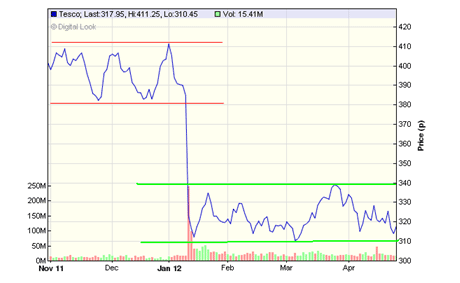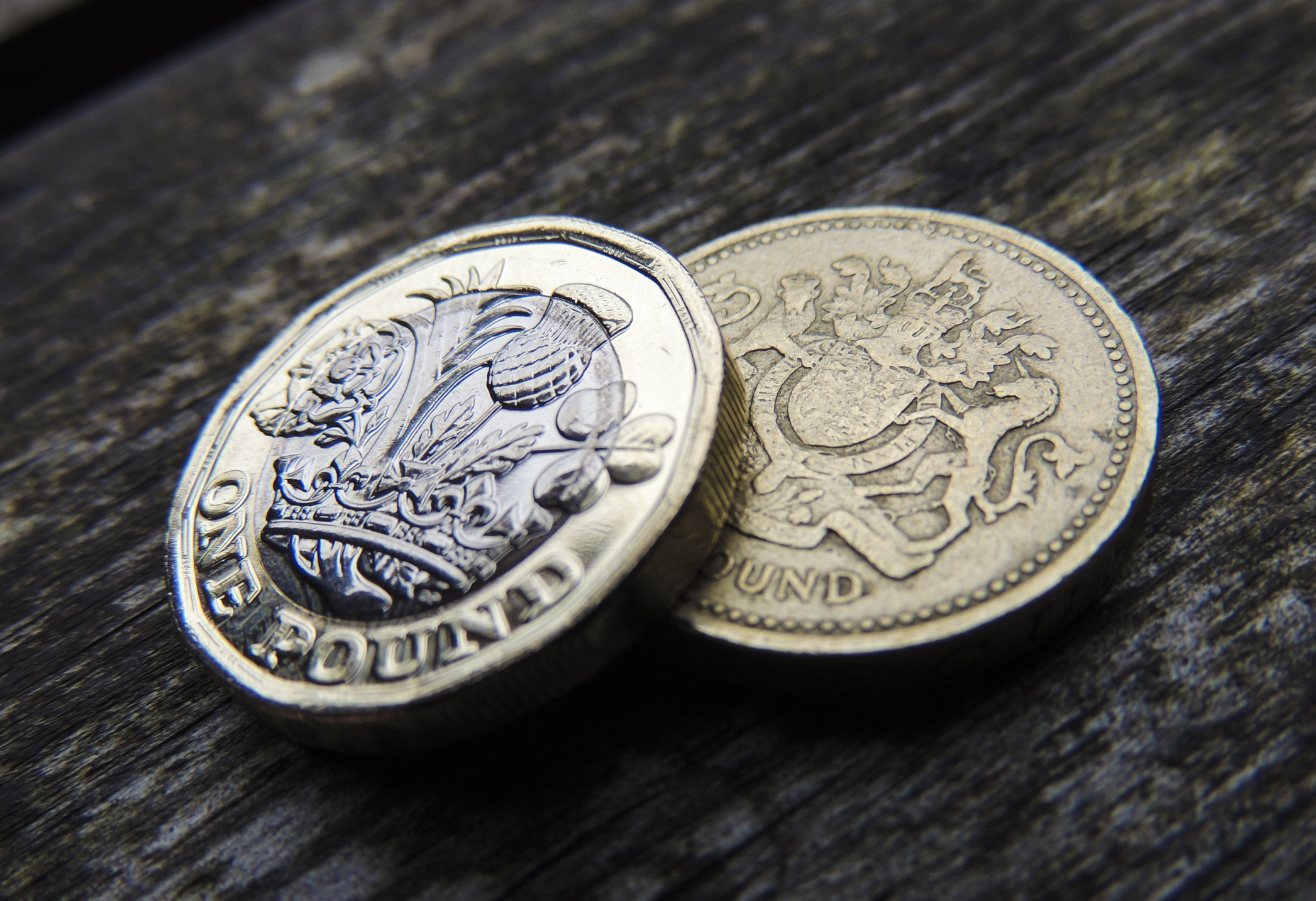What to do before you buy any stock, part one
In the first of three articles on stock analysis, Bengt Saelensminde looks at what to look out for when picking a company to invest in.
A few weeks into 2012 I was out walking on the South Downs with an old City mate of mine. It was bitterly cold, but Mark said something that warmed my old cockles a little: "Well Bengt, it looks like you were right..."
Sometime before that, Mark had put his money down on supermarket giant Tesco, one of his favourite stocks. And he'd just got his fingers burnt on the deal. And he knew as long-time Right Side readers will know that I was more a fan of one of its main rivals, Sainsbury's. So far, at least, I've chosen the right horse.
In fairness, Tesco has barely put a foot wrong in twenty years. But the January trading statement brought shock to its loyal band of followers. Basically, UK sales (two-thirds of sales) are on the wane. Tesco is losing market share to its competitors.
MoneyWeek
Subscribe to MoneyWeek today and get your first six magazine issues absolutely FREE

Sign up to Money Morning
Don't miss the latest investment and personal finances news, market analysis, plus money-saving tips with our free twice-daily newsletter
Don't miss the latest investment and personal finances news, market analysis, plus money-saving tips with our free twice-daily newsletter
Now the last time I saw Mark he told me I was a mug for shelling out on Sainsbury stock. Didn't I know that the Sage of Omaha, the great Warren Buffett himself was putting his money down on Tesco?
OK, so I was right (for the moment). But this isn't a matter of being right or wrong. As it happens I've always liked Tesco, too. No, this was just a matter of price. I just thought Sainsbury's was good value, and Tesco wasn't.
So the big question...
Is Tesco's price right now?
I had my reasons for going with Sainsbury's stock. We went over them in The Right Side last year with a mini-series. I showed you a quick three-step way to run your slide-rule over a stock. You can pick up the thread of that series here.
I think we should do the same for Tesco (LSE:TSCO). I'd like to run three dedicated issues of The Right Side on how to do an initial stock analysis. Watch out for them over the next couple of weeks. You'll be able to use this when you think about buying shares. And we'll use Tesco as an example.
To kick off today, let's first take an overview of the stock. Because before you undertake any analysis, something will have led you to a stock.
And in this case, for me, it was the chart...
Six-month chart forTesco

The chart shows pretty categorically the effect of the January trading statement. Look at that 20% slump!
Prior to that TSCO, like the FTSE 100 itself, was pretty much range-bound. It had been pretty comfortable within the £3.80 - £4.10 range. Everything was running smoothly. Right up until that horrible trading statement...
And what seems clear is that TSCO has now established a new trading range some 75p lower. There seems to be clear support and resistance levels at £3.10 and £3.40 respectively.
Why Tesco's chart has got me interested
Now for a technician/chartist (the guys that use charts to tell them when to buy/sell) this looks interesting. Not only has the stock found a new and comfortable trading range, but its tramlines are once again 30p apart (£4.10-£3.80=30p as does: £3.40-£3.10=30p). I've drawn them in with green and red lines on the chart.
OK, so I've not used any technical wizardry here, just two pairs of tramlines. This is grade-one charting. But patterns are always useful to any investor. Sometimes the less complicated the better.
Loads of traders will employ the simple strategy of buying low and selling high within this range. They'll look to pocket just under 30p on each trade. And they'll do it as many times as they can before the stock breaks out of the range.
Now, if you can make near on 10%, say three, or four times a year, I think you'll agree it may well be worth it. But beware the risks... patterns have a nasty habit of breaking loose.
Although I use technical analysis from time to time, it isn't my mainstay. I prefer to take a proper look under the bonnet and understand what I'm investing in. That is, I like to look at the fundamentals.
But nonetheless this basic charting technique is very useful. For starters, it can help find the best in-point (in this case, around the £3.10 mark) and, technically speaking, an established support should make us a little less nervous of the downside risk.
I'm not saying that I'd 100% trust this support level a stock can always fall below these technical levels. All I'm saying is that in this case, the £3.10 mark is likely to attract other buyers... and that may help the stock from diving below its support.
So I'm looking to go long at around the £3.10 level. But before I do, I want to know more about the fundamentals that underpin this stock.
What to look out for
I like to take what's known as a top-down' view on investment. That is, I'll follow certain sectors that I like and then find the best stocks within each sector.
Supermarkets aren't a bad sector of the economy. Although retail is pretty weak, the supers aren't looking too bad. Inhabiting as they do both online and off-line spaces they've got a natural firewall against the internet threat. And retailing food is pretty defensive I mean people always need to eat.
TSCO also has a very attractive emerging markets side to its business. In fact, the international side is still growing at a healthy lick.
So, I'm happy with how the business sits in the grand scheme of the economy. Now it comes to the really important stuff. The figures...
TSCO has just released its preliminary results. We won't have the full set of accounts to work with until next month. But what it's released so far gives us enough information to start us off. And as I said, I'd like to spend a couple of sessions going over the main points to look out for in the profit and loss (P&L) account and balance sheet.
For the moment, let me leave you with the key figures and ratios that are bound to interest you:
Year ending 25 February 2012
Earnings per share: 37.52p (up from 36.45p)
At today's price of £3.17, the shares trade at 9.1 times earnings
The dividend is 14.76p and forecast to go to 15.43p next year
Yield: 4.6%, rising to 4.8% next year (based on forecasts)
These figures look interesting. I'm keen to do a bit more digging. A near-on 5% yield, that's more than twice covered (ie TSCO earns twice as much as it pays out in dividends), has its attractions.
And I understand that our friend Warren Buffett has stuck his hand in his pocket and bought more stock following Tesco's demotion. He's got a pretty good record, as you may have heard.
Stay with me. In coming issues of The Right Side I'll show you some useful stuff about understanding a company report and accounts. And along the way, we'll see whether following that 20% share price fall Tesco is now in bargain territory and whether my friend Mark is right to be holding.
And I've got other ideas to tell you about, too. Stay tuned
This article is taken from the free investment email The Right side. Sign up to The Right Side here.
Important Information
Your capital is at risk when you invest in shares - you can lose some or all of your money, so never risk more than you can afford to lose. Always seek personal advice if you are unsure about the suitability of any investment. Past performance and forecasts are not reliable indicators of future results. Commissions, fees and other charges can reduce returns from investments. Profits from share dealing are a form of income and subject to taxation. Tax treatment depends on individual circumstances and may be subject to change in the future. Please note that there will be no follow up to recommendations in The Right Side.
Managing Editor: Frank Hemsley. The Right Side is a regulated product issued by Fleet Street Publications Ltd.
Fleet Street Publications Ltd is authorised and regulated by the Financial Services Authority. FSA No 115234. https://www.fsa.gov.uk/register/home.do
Get the latest financial news, insights and expert analysis from our award-winning MoneyWeek team, to help you understand what really matters when it comes to your finances.
Bengt graduated from Reading University in 1994 and followed up with a master's degree in business economics.
He started stock market investing at the age of 13, and this eventually led to a job in the City of London in 1995. He started on a bond desk at Cantor Fitzgerald and ended up running a desk at stockbroker's Cazenove.
Bengt left the City in 2000 to start up his own import and beauty products business which he still runs today.
-
 ChatGPT turns three: what’s next for the ‘AI era’?
ChatGPT turns three: what’s next for the ‘AI era’?Three years after its launch kickstarted the age of AI, ChatGPT and its maker OpenAI are driving the stock market. But concerns are growing over whether OpenAI will be able to turn its AI dominance into profit.
-
 What to do with old £1 coins
What to do with old £1 coinsThe old one pound coin was demonetised in 2017, but there are still millions out there in the UK. Here’s what to do if you find an old £1.